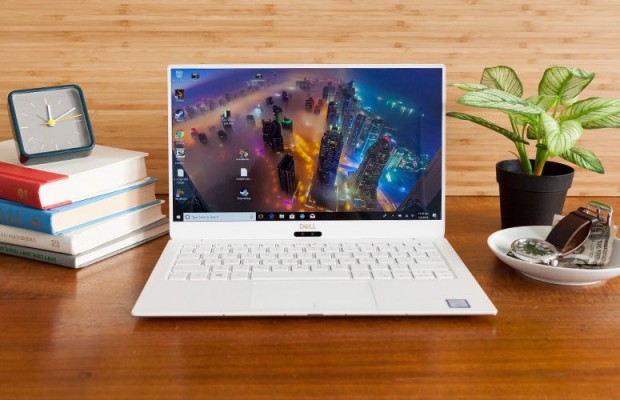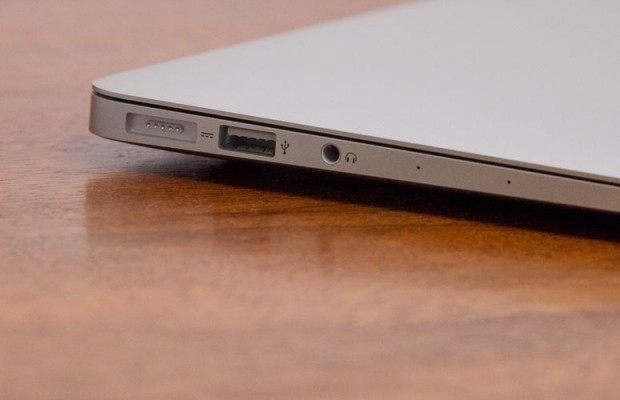5 Things the New MacBook Air Needs
Apple is reportedly gearing up to release a more affordable version of its MacBook Air laptop, the tried and true ultraportable notebook that has stayed in Apple's lineup without significant updates over the last few years. But, as someone who still likes the MacBook Air, I want more than just a lower price tag.
While Laptop Senior Writer Andrew E. Freedman believes the MacBook Air should die, I'd rather Apple breathe some life into its formerly buzz-worthy notebook.
Zac Hall of 9to5Mac told me he expects to see the current $999 model at "similar if not same specs but at a much lower price." How low? Zac said it could be at "Maybe $699 Mac mini-ish levels?" though "$200 under the current price is still an improvement," which would bring it to $799.
MORE: Which MacBook Should You Buy? MacBook vs. Air vs. Pro
But a price drop alone won’t cut it. Here’s what the MacBook Air needs to be relevant in 2018.
Sharpen that screen
It's shocking, and almost-appalling, that the MacBook Air's default $999 model still ships with a sub-Full HD display, which measures 1440 x 900 pixels. This weekend, as I loaded an Air up with applications for an upcoming business trip, I noticed that even Apple's own programs and App Store appear to be designed for a screen with higher resolution.
What would make more sense, is to have two display options: 1920 x 1080 pixels (because you're worth this baseline) and a Retina-grade 2560 x 1600 panel, the same measurements as you find in the 13-inch MacBook Pro. Hall agreed: "If e’re making wishes, we’d love to see Retina resolution meet the 13-inch MacBook Air."
Sign up to receive The Snapshot, a free special dispatch from Laptop Mag, in your inbox.
That would bring the Air closer to parity with our favorite laptop, the Dell XPS 13, which also starts at $999, but includes the Full HD screen that the MacBook Air is still missing. The XPS 13 also includes an optional 4K (3840 x 2160) display, but I'd expect Apple will want to work within the parts that currently exist in its supply chain.
Jason Snell, who covers all things Mac at SixColors.com (and contributes to Tom’s Guide), isn’t so sure a sharper display is in the works. “It’s clear that Apple intended the MacBook to be the replacement for the MacBook Air, and has kept the Air around only because it’s got a lower price and sells well into certain markets, especially education,” he said. “The problem is, its continued success shows that for some users, price is more important than having an ultra-thin design with a Retina display."
Spice up those specs
The MacBook Air's processor got a slight upgrade in 2017 (1.8 GHz vs 1.6 GHz), but it's still rocking 5th Gen Intel technology, which is ancient compared to the 8th Gen CPUs on the market. Since Apple has a history of being slightly behind the times when it comes to Intel's processors, I'd be perfectly fine with a 7th Gen CPU.
Yes, you could argue that all new Macs should have modern 8th Gen Intel processors, which the XPS 13 does, but I'm OK with leaving that level of performance for pro users investing in MacBook Pro.
The current MacBook Air starts with 8GB of RAM, which would be fine for the newer model. But as any multitasker can tell you, 16GB is better, and you don’t need to be a video editor to appreciate the extra memory.
Tweak, but don’t change, the keyboard
The biggest reason why I want the Air to continue to live is that of all of Apple's current laptops, I prefer the Air’s keyboard the most. Each key bounces up and down, responding to the force of my fingers, unlike the flat butterfly mechanism keys on the current MacBook and MacBook Pros, which barely feel any better than trying to type an email out on an iPad screen.
Apple improved the 12-inch MacBook's keyboard in 2017, but the travel is still a very-shallow 0.5mm. The only thing I would change on the Air’s layout is to increase the size of the left and right directional keys, borrowing from the current Pro keyboard.
Add modern ports
Yes, I'm happy to have dual USB 3.0 ports (the boxy Type-A kind), the MagSafe 2 charging connector that I wish Apple didn't drop for the 12-inch MacBook and its MacBook Pros, its SDXC memory reader, headphone jack and Thunderbolt 2.0.
But that lineup … pardon my reference, it needs "one more thing" — a Type-C port. Sooner or later (possibly already), you'll buy some accessory or display that supports this speedier, power-drawing connector. And you won't want to buy an adapter to make it work.
I'm not alone on this, as Hall's MacBook Air wish list includes "USB-A and Type-C ports like the new iMacs," as well as "color options like space gray, and even more battery life."
“It’s hard to see Apple moving forward with a laptop that doesn’t offer USB-C and still has MagSafe,” Snell added. “But I wonder if it might design a new Air to add a USB-C port while retaining a USB-A port as well.”
And if I'm greedy?
Can Apple embed Face ID into the MacBook Air's webcam? I'd pay a little bit more for that biometric security, as something tells me the Touch Bar won't be coming to an Air near you.
Outlook
Sure, it doesn't have the ultimate performance of the Pro line, nor the thinness of the 12-inch MacBook. But if you offer an Air that packs comfortable typing and a display you won't be ashamed of, as well as decent speed and solid battery life? That MacBook Air has a chance if the price is right.
Of course, Apple checking off every box on my wish-list isn't a given. According to Snell, "The real question is probably, how does Apple build a new laptop that appeals to the segment of the market that’s buying the Air?" This is where it gets tricky, as he noted "finding ways to get the price down to $999 … will lead Apple to some tough choices."
If Apple makes most of the above changes, though, I’ll be there on Day 1 to buy it.
Credit: Shaun Lucas/Laptop Mag
Apple Laptop Guide
Henry was a contributing writer at Laptop Mag. He penned hundreds of articles, including helpful how-tos for Windows, Mac, and Gmail. Henry has also written about some of the best Chromebooks, and he has reviewed many Apple devices, including various MacBook Air laptops. He is now a managing editor at our sister site Tom's Guide, covering streaming media, laptops, and all things Apple.






